A R Lennox
Polar bears (Ursus maritimus), the most evolutionary advanced hibernators, avoid significant bone loss during hibernation
Lennox, A R; Goodship, A E
Authors
A E Goodship
Abstract
Some hibernating animals are known to reduce muscle and bone loss associated with mechanical unloading during prolonged immobilisation, compared to humans. However, here we show that wild pregnant polar bears (Ursus maritimus) are the first known animals to avoid significant bone loss altogether, despite six months of continuous hibernation. Using serum biochemical markers of bone turnover, we showed that concentrations for bone resorption are not significantly increased as a consequence of hibernation in wild polar bears. This is in sharp contrast to previous studies on other hibernating species, where for example, black bears (Ursus americanus), show a 3-4 fold increase in serum bone resorption concentrations post-hibernation, and must compensate for this loss through rapid bone recovery on remobilisation, to avoid the risk of fracture. In further contrast to black bears, serum concentrations of bone formation markers were highly significantly increased in pregnant female polar bears compared to non-pregnant, thus non-hibernating females both prior to and after hibernation. However, bone formation concentrations in new mothers were significantly reduced compared to pre-hibernation concentrations. The de-coupling of bone turnover in favour of bone formation prior to hibernation, suggests that wild polar bears may posses a unique physiological mechanism for building bone in protective preparation against expected osteopenia associated with disuse, starvation, and hormonal drives to mobilise calcium for reproduction, during hibernation. Understanding this physiological mechanism could have profound implications for a natural solution for the prevention of osteoporosis in animals subjected to captivity with inadequate space for exercise, humans subjected to prolonged bed rest while recovering from illness, or astronauts exposed to antigravity during spaceflight. (C) 2008 Elsevier Inc. All rights reserved.
Citation
Lennox, A. R., & Goodship, A. E. Polar bears (Ursus maritimus), the most evolutionary advanced hibernators, avoid significant bone loss during hibernation. https://doi.org/10.1016/j.cbpa.2007.11.012
| Journal Article Type | Article |
|---|---|
| Deposit Date | Nov 11, 2014 |
| Journal | COMPARATIVE BIOCHEMISTRY AND PHYSIOLOGY A-MOLECULAR AND INTEGRATIVE PHYSIOLOGY |
| Volume | 149 |
| Issue | 2 |
| Pages | 203-208 |
| DOI | https://doi.org/10.1016/j.cbpa.2007.11.012 |
| Public URL | https://rvc-repository.worktribe.com/output/1430055 |
| Additional Information | Corporate Creators : UCL |
Downloadable Citations
About RVC Repository
Administrator e-mail: publicationsrepos@rvc.ac.uk
This application uses the following open-source libraries:
SheetJS Community Edition
Apache License Version 2.0 (http://www.apache.org/licenses/)
PDF.js
Apache License Version 2.0 (http://www.apache.org/licenses/)
Font Awesome
SIL OFL 1.1 (http://scripts.sil.org/OFL)
MIT License (http://opensource.org/licenses/mit-license.html)
CC BY 3.0 ( http://creativecommons.org/licenses/by/3.0/)
Powered by Worktribe © 2025
Advanced Search
